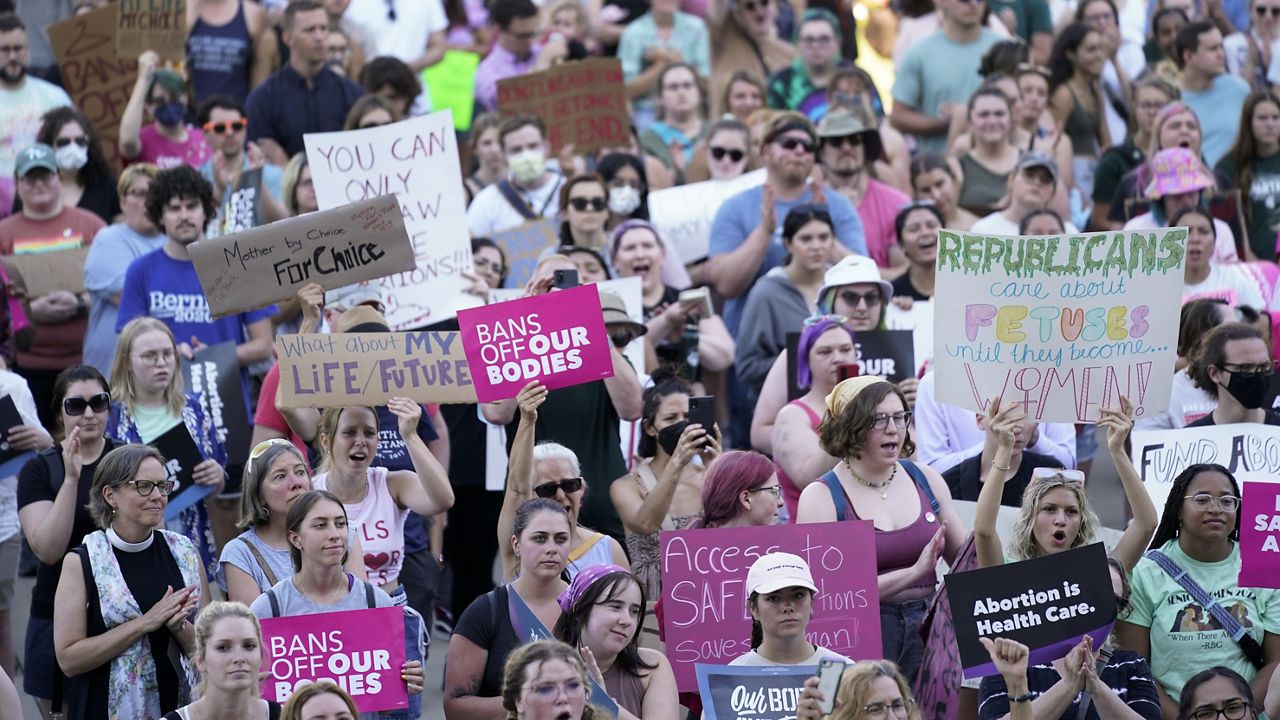In 2023, the first full year after the Supreme Court overturned Roe v. Wade, abortions within the formal U.S. health care system hit a 12-year high, according to data released Tuesday by the Guttmacher Institute, an abortion-rights policy think tank.
What You Need To Know
- In 2023, the first full year after the Supreme Court overturned Roe v. Wade, abortions within the formal U.S. health care system hit a 12-year high, according to data released Tuesday by the Guttmacher Institute, an abortion-rights policy think tank.
- There were 1,026,690 abortions performed last year, a rate of 15.7 abortions per 1,000 women, according to the data
- Medication abortion accounted for 63% of all abortions last year, up 10 percentage points from 2020
- An analysis by Guttmacher’s Isaac Maddow-Zimet and Candace Gibson found increased access to telehealth services and the Food and Drug Administration’s decision in 2021 to lift an in-person requirement for receiving the drug mifepristone were also behind the rise in medication abortions
There were 1,026,690 abortions performed last year, a rate of 15.7 abortions per 1,000 women, according to the data. That is up from 930,160, or 10.4%, in 2020, the last previous year for which comprehensive data was available.
Medication abortion accounted for 63% of all abortions last year, up 10 percentage points from 2020.
“Improved access to medication abortion is a positive development, but it is not a panacea,” Rachel Jones, principal research scientist at the Guttmacher Institute, said in a statement. “As abortion restrictions proliferate post-Dobbs, medication abortion may be the most viable option—or the only option—for some people, even if they would have preferred in-person procedural care.”
Dobbs v. Jackson Women’s Health Organization was the 2022 Supreme Court ruling in which the justices reversed the nearly 50-year-old Roe v. Wade decision that had protected abortion rights nationwide.
Fourteen states have since passed near-total abortion bans, while five others have outlawed them after six weeks of pregnancy.
Less restrictive states saw a 25% increase in the number of abortions provided, while states bordering others with total bans experienced the sharpest increases (37%), according to the data.
Illinois had the largest increase in the total number of abortions since 2020, up 38,010 — 25,660 involving patients who traveled from out of state. Meanwhile, Wyoming experienced the sharpest rise percentage-wise, 271%.
More than 160,000 people traveled out of state for an abortion, accounting for about one in six abortions.
An analysis by Guttmacher’s Isaac Maddow-Zimet and Candace Gibson found increased access to telehealth services and the Food and Drug Administration’s decision in 2021 to lift an in-person requirement for receiving the drug mifepristone were also behind the rise in medication abortions. The combination of mifepristone and misoprostol is the most common medication abortion regimen in the United States.
The Supreme Court will rule in the coming months on a challenge to mifepristone’s 24-year-old regulatory approval, a decision that could restrict the ability to mail mifepristone or restore the in-person requirement.
“Reinstating outdated and medically unnecessary restrictions on the provision of mifepristone would negatively impact people’s lives and decrease abortion access across the country,” Guttmacher Director of Federal Policy Amy Friedrich-Karnik said in a statement.
The level of medication abortion is almost certainly an undercount because it includes brick-and-mortar clinics and online-only providers but not self-managed medication abortions that occur outside the formal health care system or abortion medication mailed to people in states with total abortion bans, according to an analysis by Jones and Friedrich-Karnik.
Maddow-Zimet and Gibson’s analysis also attributed the rise in overall abortions to “monumental efforts” in the wake of the Dobbs ruling by clinics, abortion funds and logistical support organizations to help people seeking abortions who live in states where it is banned.
But Maddow-Zimet and Gibson argued in their analysis that the increase in overall abortions does not negate the impact of anti-abortion policies.
The data, they wrote, proves people will continue to seek abortions despite restrictions and bans, and that communities of color, LGBTQ+ people, young people, immigrants, people living with low incomes and those living with disabilities are less likely to overcome the new logistical barriers. States with strict abortion laws have higher maternal death rates, they wrote.
Since the Guttmacher Institute started tracking the procedures in 1973, abortions hit an all-time high at 1.6 million in 1990. They steadily fell over the next 27 years, to 885,000 in 2017, before rising again in the years since.








